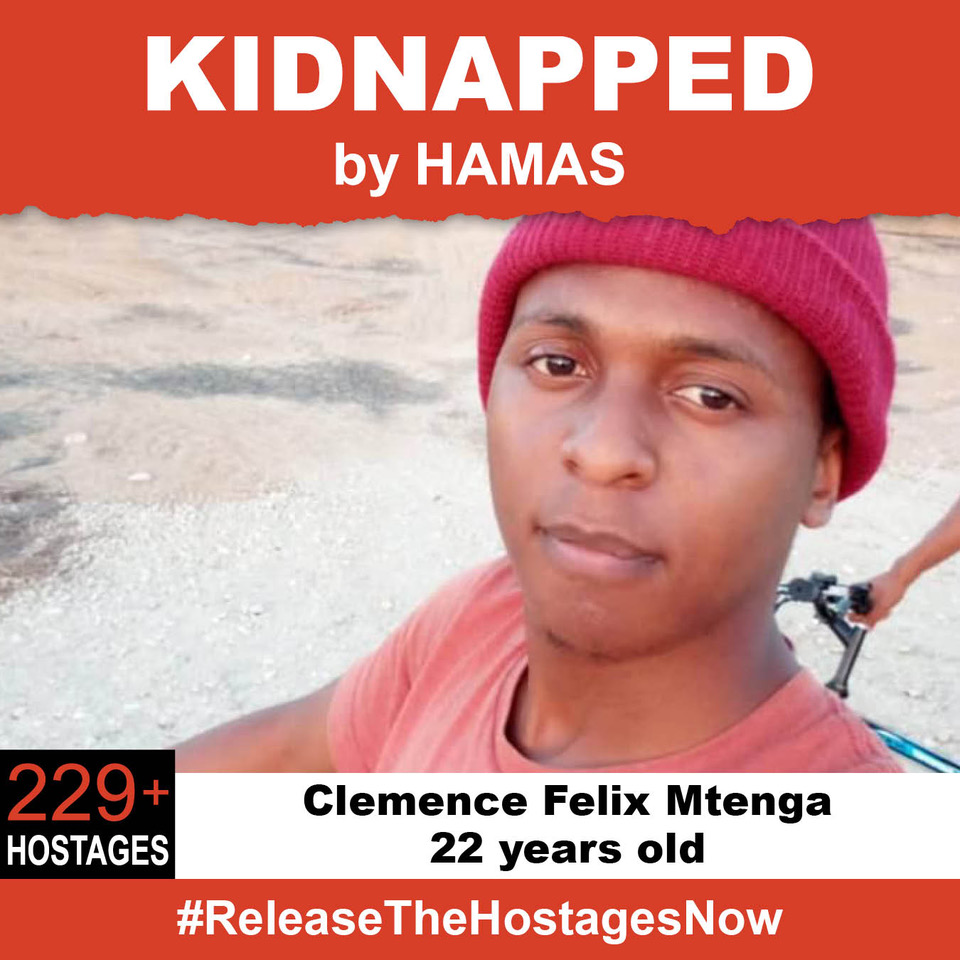One Is Confirmed Dead; Another Held Since 2014
L.A. Times Letter-Signers Can’t Cover War
. . . Why This Signer’s Defense Didn’t Wash
‘Citizen Journalist’ Found Guilty in U.S. Capitol Riot
Univision Anchor Quits in Wake of Trump Interview
Washington Post Graphically Shows AR-15 Impact
Soldiers’ Vindication Also a Win for Wells, Du Bois
Reporter Sues Over His Arrest at News Conference
Series Tackles High Rate of Natives in Foster Care
Press Group Scores Nicaragua, Cuba, Venezuela
Short Takes: Continuing loss of newspapers; Maribel Perez Wadsworth; Black and Latino students at disadvantage; FCC’s “first major U.S. digital civil rights policy”; hotelier who refused Native Americans must advertise otherwise; representation of people of color; Asian Americans see racism as serious problem; AAJA’s 2024 convention dates; Sacramento Observer; Roland Martin; Eddie Flores;
International African American Museum; Jim Avila; Michael Steele; Ibram Kendi; Jamil Smith; Sen. Tim Scott; DuJuan McCoy; “Lawman: Bass Reeves”; Helen T. Gray; journalist killed, two more abucted in Mali.
Support Journal-ismsDonations are tax-deductible.
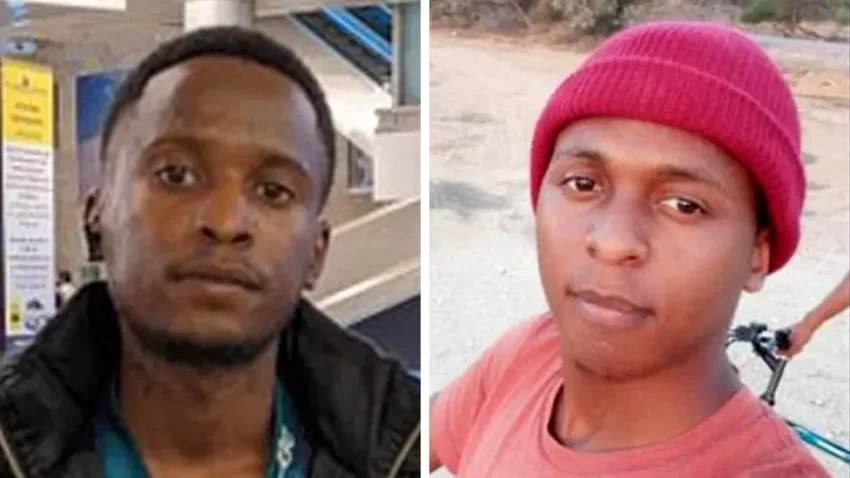
One Is Confirmed Dead; Another Held Since 2014
The hostages held by Hamas aren’t just Israeli or Jewish, unlike characterizations by many in the news media; some are Black, brown or Asian.
One of them was just reported dead. “On Friday, the Tanzanian government confirmed that a 22-year-old agricultural intern who was believed to have been taken hostage by Hamas militants in Israel on Oct. 7 had been found dead,” Haley Ott reported for CBS News.
“Details of how Clemence Felix Mtenga died, or where or how his body was found, weren’t released by either the Tanzanian or Israeli governments. Mtenga was one of 260 Tanzanians studying agriculture in Israel as part of an agreement between the two countries.”
[Nov. 23 update: “Clemence Felix Matanga, a 22-year-old student and citizen of Tanzania, was murdered in his home in Kibbutz Nir Oz on October 7 by Hamas. Israeli authorities assumed he was held hostage in Gaza, until his body was identified late last week,” Ofer Aderet reported Nov. 18 for Haaretz. “Haaretz has learned that Matanga’s body has been awaiting identification since October 7 until last week. His family was informed of his death after providing a DNA sample which allowed for conclusive identification. . . . .]
Munira Hussein and Alex Smith added Friday for the BBC, “Israel says the hostages — which were taken from Israel to the Gaza Strip — come from 25 countries, including one South African who is yet to be identified.”
For many, the status of the hostages are the center of the Israel-Hamas war. “The hostages are at the heart . . . ,” Moshe Emilio Lavi, a management consultant who is a former captain of the Israel Defense Forces, wrote Wednesday in The New York Times.
“This week, there have been reports that Israel and Hamas may be close to a large scale release of hostages — women and children — in exchange for a short cease-fire and a simultaneous release of Palestinian women and young people held in Israeli prisons. I hope this comes to pass. But we will not rest until all the hostages, irrespective of their ages, genders and nationalities, are home.”
How those hostages are portrayed is important, argues Robin Washington, an editor at large at the Forward, co-founder of the Alliance of Black Jews, and a veteran journalist in U.S. mainstream media.
Washington wrote, “A stronger emphasis on the international nature of the terrorist attack as one against citizens of dozens of countries could have lessened Israel’s isolation as it faces the public relations backlash for its counterstrikes in Gaza, especially as the hostage crisis continues with those foreign nationals still being held. . . .
“Thousands of foreign nationals live in Israel, many of them on work and student visas,” Washington said Nov. 7 in the Forward. “Many hail from Asia but also Africa. . . . Most of Israel’s foreign labor force began to take the place of Palestinian workers in the country after the Second Intifada in the early 2000s. . . .
“It’s not just Hamas who doesn’t distinguish between the lives of these workers and those of Israeli Jews. Journalists and social media posts have frequently referred to the attack’s victims as Israelis or Jews. Or as a CNN military analyst, Lt. Gen Mark Hertling, put it: ‘The objective was to not only kill a lot of Jews, but also to capture Jews. ‘ ”
Washington quoted Filipina American Rabbi Mira Rivera, who said that when the Oct. 7 Hamas attack took place, she immediately thought about Thai farm workers near the border with Gaza.
“I said, ‘Oh my gosh, they’re going to find the Thai workers,’ ” said Rivera, the rabbi-in-residence at New York’s Harlem Jewish Community Center. “ ‘ Some people just want to show Jews, period,’ she said. ‘But we are all interdependent.’ ”
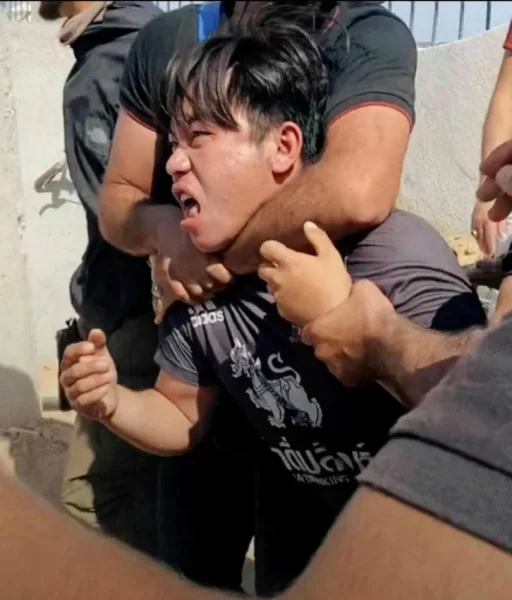
“Gong Sae Lao of Thailand,” 26, “wasn’t worried when he traveled a year ago to Israel to work as a farm hand,” the Associated Press reported Nov. 3.
“Gong knew vaguely about the conflict between Israel and the Palestinians. He knew of occasional rocket attacks from the air, of skirmishes and of tensions. But the capacity to earn a living was limited at home in northern Thailand, where Gong delivered fruits and vegetables to market. Moreover, his family was in debt, and Gong — with his father long dead and a brother in prison — was the main provider. . . .
“Four of the Thai workers in Gong’s tight-knit group managed to escape. . . . Gong and another worker were taken hostage. Their living quarters were burned to the ground.
“Gong’s family is from the village of Mae Fah Luang, in northern Chiang Rai province. They are members of the Hmong minority. . . .”
Mtenga, 22, was one of two Tanzanians taken by Hamas on Oct. 7, Hussein and Smith wrote for the BBC.
“The country’s foreign ministry said it was in touch with Israel over the other Tanzanian hostage, Joshua Mollel.
“”Approximately 260 Tanzanians study agriculture in Israel, and both Mr Mtenga and Mr Mollel had been in the country as part of an agricultural internship programme, Israel’s foreign ministry said on X. The pair had only landed in Israel in September, and were due to study there for 11 months.
“Mr Mtenga had been living on Kibbutz Nir Oz and working at a dairy farm in the afternoons, a friend and fellow student told the BBC. . . .”
The Associated Press told other such stories from Thailand, Tanzania and Cyprus, as well as from Israel and the United States.
There are yet more sides to the hostage issue.

“Very little has been heard about Ethiopian-Israeli Avera Mengistu and Bedouin Arab Israeli Hisham al-Sayed, seized in 2014 and 2015 respectively,” Laurence Peter reported Oct. 21 for the BBC.
Mengistu has mental issues. Zina Rakhamilova, co-founder and the COO of a digital marketing firm specializing in geopolitics, wrote about his case for the Jerusalem Post under the headline, “Why don’t Israelis, Diaspora Jews care about Avera Mengistu?
Separately, the Committee to Protect Journalists reported Saturday that “As of November 18, CPJ’s preliminary investigations showed at least 42 journalists and media workers were among the more than 13,000 killed since the war began on October 7 — with over 11,000 Palestinian deaths in Gaza and the West Bank and 1,200 deaths in Israel. . . .”
“ ‘CPJ emphasizes that journalists are civilians doing important work during times of crisis and must not be targeted by warring parties,’ said Sherif Mansour, CPJ’s Middle East and North Africa program coordinator.
Mansour continued, “Journalists across the region are making great sacrifices to cover this heart-breaking conflict. Those in Gaza, in particular, have paid, and continue to pay, an unprecedented toll and face exponential threats. Many have lost colleagues, families, and media facilities, and have fled seeking safety when there is no safe haven or exit.”
L.A. Times Letter-Signers Can’t Cover War
“The Los Angeles Times is prohibiting staff from covering the Gaza war for at least three months if they signed a strongly-worded open letter criticizing Israel’s military operations in the region,” Max Tani reported Thursday, updated Friday, for Semafor.
“Earlier this month, nearly a dozen staffers at the LA Times signed the open letter condemning the Israeli government’s bombing of Gaza, and saying the military operations were harming journalists and threatening newsgathering. The letter also called on newsrooms to use language including ‘apartheid,’ ‘ethnic cleansing,’ and ‘genocide’ when referring to the Israeli bombardment of Gaza.
“Two people with knowledge of the situation told Semafor that staffers who signed the letter have been told by the paper’s management that they will not be allowed to cover the conflict in any way for at least three months. . . .
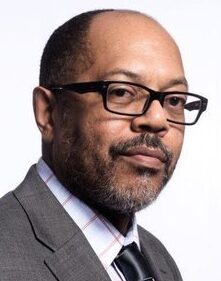 “The LA Times did not respond to a request for comment. But earlier this week, LA Times top editor Kevin Merida (pictured) reminded staff of the company’s ethics and fairness policy, which stated that a ‘fair-minded reader of the Times news coverage should not be able to discern the private opinions of those who contributed to that coverage, or to infer that the organization is promoting any agenda.’
“The LA Times did not respond to a request for comment. But earlier this week, LA Times top editor Kevin Merida (pictured) reminded staff of the company’s ethics and fairness policy, which stated that a ‘fair-minded reader of the Times news coverage should not be able to discern the private opinions of those who contributed to that coverage, or to infer that the organization is promoting any agenda.’
“ ‘Feeling heard and seen are essential to a healthy newsroom, as are civility and collective responsibility. Rigor, fairness, dissent, difference, can all co-exist as qualities that lead to the best journalism,’ Merida wrote in a company-wide email. ‘But we must maintain the integrity of that journalism, which is core to our reputation. Journalism itself is an agent for change. Having a compass to guide that work ensures that we don’t imperil it, or inadvertently cause harm to our colleagues’ ability to do their jobs,’ he wrote. . . .”
. . . Why This Signer’s Defense Didn’t Wash
 New York Times Magazine writer Jazmine Hughes (pictured), forced out after signing an open letter condemning Israel’s siege on Gaza and criticizing the media’s coverage of the war, said Tuesday that as a magazine writer, she should have had license to do so, but Charlotte Klein, writing in Vanity Fair, said such an argument was doomed in the current climate.
New York Times Magazine writer Jazmine Hughes (pictured), forced out after signing an open letter condemning Israel’s siege on Gaza and criticizing the media’s coverage of the war, said Tuesday that as a magazine writer, she should have had license to do so, but Charlotte Klein, writing in Vanity Fair, said such an argument was doomed in the current climate.
“Times staffers I spoke to noted that writing in the magazine has by nature been more open to commentary than the news pages, Klein wrote Wednesday. ‘”But it’s still part of the Times paper and ultimately still answers to [Executive Editor] Joe Kahn,‘ as one puts it.
“The executive editor and his deputies have made it clear to staff that it is not acceptable to publicly align with an advocacy group or criticize colleagues’ work. ‘Under this current masthead,’ another Times staffer notes, ‘there has never been less tolerance for this.’ Especially at this moment, when the Times has been under a microscope for anything related to the Israel-Hamas war. ‘The context here is huge,’ a third staffer says, ‘and that letter took a direct swipe at the Editorial Board.’ ”
Hughes said the previous day on “Democracy, Now!” that “the biggest note that I want to make, that I signed that letter as a magazine journalist, right? I wasn’t working in the newsroom. I wasn’t doing the sort of stories where you take the sort of like distant, authoritative stance where you are presenting unbiased and unfiltered facts. Every story that I’ve written for The New York Times has been, like, through my very real identity and experiences.
“The fact that I’ve written so many stories with the word ‘we’ — right? — that can refer to any group of people, any sort of community that I’m a part of, already puts me in a situation where I didn’t purport to try to write or continue the sort of — the standards of the newsroom, of the actual New York Times. I think that I was writing — or, all the stories I wrote had a particular voice, and I think that voice translated onto the letter because it’s me, and that’s what makes sense. . . .”
Hughes had violated the Times’ rules earlier this year when she signed another public letter that expressed concerns about how the newspaper covered transgender issues.
Meanwhile, as Dan Sheehan wrote Thursday for LitHub, “Last night at the National Book Awards, over a dozen NBA finalists took to the stage to use their moment in the spotlight to oppose the ongoing bombardment of Gaza and to call for a ceasefire.
 “Then, earlier this morning, the news broke that Pulitzer Prize-winning poet, essayist, and poetry editor of the New York Times Magazine, Anne Boyer (pictured), has resigned from her post, writing in her resignation letter that ‘the Israeli state’s U.S.-backed war against the people of Gaza is not a war for anyone’ and that she ‘won’t write about poetry amid the ‘reasonable’ tones of those who aim to acclimatize us to this unreasonable suffering.’ ”
“Then, earlier this morning, the news broke that Pulitzer Prize-winning poet, essayist, and poetry editor of the New York Times Magazine, Anne Boyer (pictured), has resigned from her post, writing in her resignation letter that ‘the Israeli state’s U.S.-backed war against the people of Gaza is not a war for anyone’ and that she ‘won’t write about poetry amid the ‘reasonable’ tones of those who aim to acclimatize us to this unreasonable suffering.’ ”
- Michelle Alexander, Hammer & Hope: Our liberation depends upon us breaking our silences.
- Anne Boyer, Substack: My Resignation
- Mary C. Curtis, Roll Call: Is it that hard to be a leader for all Americans? Republicans should resist pouring gasoline on the Islamophobia fire
- Marc Owen Jones, Daily Beast: Israel’s Comically Bad Disinfo Proves They’re Losing the PR War
- Mohammed Nabulsi, Radhika Sainath, Waldemar Oliveira, Jen Parker, Olufemi O. Taiwo, Hammer & Hope: This Is America’s War on Palestinians as Much as Israel’s
- Amy Qin, WBEZ Chicago: More Palestinians live in Cook County than any other county in the nation
- Jonathan Shamir, Jewish Currents: Israel’s War on Journalists
- Hagar Shezaf, Haaretz, Israel: In Thailand, Relatives of Thai Hostages in Gaza Call for Their Release: ‘This Is Too Barbaric’
- Joanna Slater, Washington Post: How the U.S. is trying to bring home American hostages held in Gaza
- Trisha Thadani, Eli Tan and Taylor Telford, Washington Post: Disney, Comcast, Lionsgate pull ads from X over antisemitic posts
- Times of Israel: Presumed captive: Thai worker Gong Sae Lao, family’s breadwinner
- Alex Thurston, Responsible Statecraft: Africans see hypocrisy in US policy on Israel in Gaza
- Andrew Wallenstein, Variety: After Seeing Israel’s Gory Oct. 7 Hamas Attack Footage, I Say You Shouldn’t — Yet
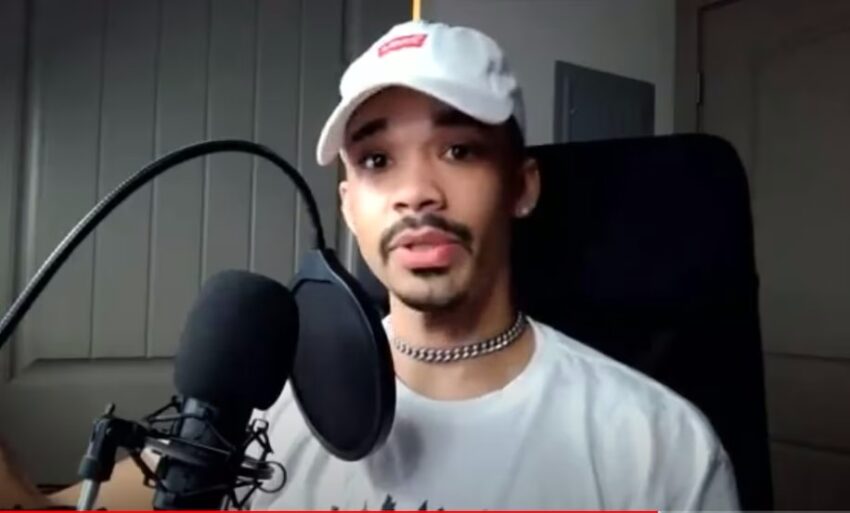
‘Citizen Journalist’ Found Guilty in U.S. Capitol Riot
“As he recorded video of his journey through the U.S. Capitol on Jan. 6, 2021, John Earle Sullivan captured himself shouting at rioters to seize the American seat of power, breaking a window inside a Senate office, and then filming the fatal shooting of rioter Ashli Babbitt outside the House chamber,” Tom Jackman wrote Thursday for the Washington Post.
“Earlier that day, a documentary filmmaker followed Sullivan and captured him helping a rioter scale a wall to reach the upper West Terrace of the Capitol, wielding a switchblade knife near the House chamber, and later musing about the Babbitt video. ‘Everybody’s gonna want this,’ Sullivan said excitedly, according to court documents. ‘Nobody has it. I’m selling it, I could make millions of dollars.’ Court records show that Sullivan was paid more than $90,000 for the rights to the video.
“Federal prosecutors said Sullivan had been one of the thousands of rioters seeking to cause mayhem that day, and charged him with felony obstruction of an official proceeding, namely the confirmation of Joe Biden’s presidential win. Sullivan also faced a second felony for civil disorder and five misdemeanors.
“When his case landed before a jury this week, Sullivan claimed that he was simply working as a citizen journalist to document history, and all of his words and deeds indicating he was sympathetic to President Donald Trump were just a ruse to blend in with the rioters. ‘It’s my job to document and record history,’ Sullivan testified. He said his cheers of approval for the rioters and offers to help them were merely to ‘say a lot of things to try and protect myself’ from people he feared might turn on him if they knew his true political colors.
“The jury didn’t believe him. On Thursday, after deliberating for less than four hours, they convicted Sullivan of obstructing the electoral vote count, civil disorder and five misdemeanors, and Senior U.S. District Judge Royce C. Lamberth ordered him held in jail until sentencing. . . .”
- Isaac Arnsdorf, Josh Dawsey and Devlin Barrett, Washington Post: Trump and allies plot revenge, Justice Department control in a second term (Nov. 5, updated Nov. 6)
- Mike Bedigan, The Independent, London: Trump said he wanted his violent rhetoric to be taken ‘to heart’ by fans, author claims
- Kevin Johnson, National Press Foundation: ‘January 6 Is Still Ongoing,’ Says Officer Harry Dunn (Oct. 2)
Univision Anchor Quits in Wake of Trump Interview
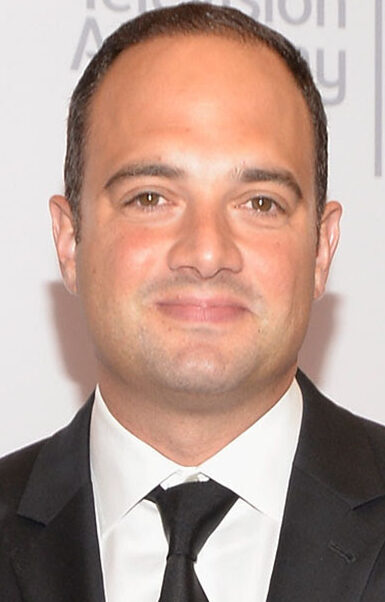 “León Krauze (pictured). one of the most prominent anchors at Univision‘s news division, has left the network in the wake of a controversial interview with former President Donald Trump that took place last week and has spurred concerns among journalists at the company that the Spanish-language media giant is no longer challenging Republican politicians,” Brian Steinberg reported Wednesday for Variety.
“León Krauze (pictured). one of the most prominent anchors at Univision‘s news division, has left the network in the wake of a controversial interview with former President Donald Trump that took place last week and has spurred concerns among journalists at the company that the Spanish-language media giant is no longer challenging Republican politicians,” Brian Steinberg reported Wednesday for Variety.
“Krauze, who spent a significant chunk of his career anchoring Univision’s KMEX weeknight news program, became co-anchor of the company’s national late-night news program ‘Noticiero Univision Edición Nocturna’ in January of 2022.
“Democrats were alarmed by the interview, which wasn’t as confrontational as exchanges the news division has had with Republican politicians in the past. The Washington Post reported earlier this week that Jared Kushner, Donald Trump’s son-in-law, helped arrange the event. The Latino vote is highly desired by both parties and seen in some sectors as being up for grabs in the 2024 election, with some parts of the U.S. Spanish-speaking population showing favor for Trump and Republicans in recent elections.
“Grupo Televisa, the Mexican media company that merged with Univision in 2021, has been known for cultivating relationships with political leaders in Mexico. . . .”
- Phil Boas, Arizona Republic: As Univision cozies up to Trump, the Latino vote is very much in play
- Adrian Carrasquillo, the Messenger: Democrats and Latino Leaders Slam Univision for Trump Coziness, Call for Network to Make Amends
- Michael Scherer and Josh Dawsey, Washington Post: Univision, the Spanish language news giant, shifts its approach to Trump
- Michael Scherer, Washington Post: Latino backlash grows over Donald Trump’s friendly Univision interview
WFAA-TV in Dallas tells viewers about the Washington Post project, which includes photos of the May 24, 2022, mass shooting at Uvalde downstate from Dallas. (Credit: YouTube)
Washington Post Graphically Shows AR-15 Impact
“Today, The Washington Post went further than any mainstream news organization has ever gone before in showing the brutality and devastation of something that plagues this nation: mass shootings,” Tom Jones wrote Thursday for the Poynter Institute.
“This morning, The Washington Post published ‘Terror on Repeat.‘
“It’s at this point, you should be warned: The Post piece is extremely graphic and some may find it disturbing. The Post looks back at 11 mass shootings in which the weapon used was an AR-15. Just the names of the places bring back horrific memories: Parkland, Florida, and Uvalde, Texas, and Newtown, Connecticut. The Post’s project includes the shootings at a concert in Las Vegas, a movie theater in Aurora, Colorado, and a synagogue in Pittsburgh.
“To have the most impact, the Post told the story through photos, videos and the words of those who have survived these horrific shootings. The photos are jarring. . . .”
- Paul Farhi, Washington Post: The Post publishes photos from mass shootings and draws mixed reaction
- Tasmiha Khan, New York Amsterdam News: Faith and fear: The impact of gun violence on Muslim communities
- Robert Klemko, John Woodrow Cox, Lizzie Johnson and Steven Rich, Washington Post: Guns are seized in U.S. schools each day. The numbers are soaring. (Oct. 10)
- Jim Morrison and Justin Jouvenal, Washington Post: Mother of boy who shot Va. teacher gets 21-month sentence on gun charges
- Margo Snipe, Capital B: How Gun Violence Is Frustrating Public Health Advocates
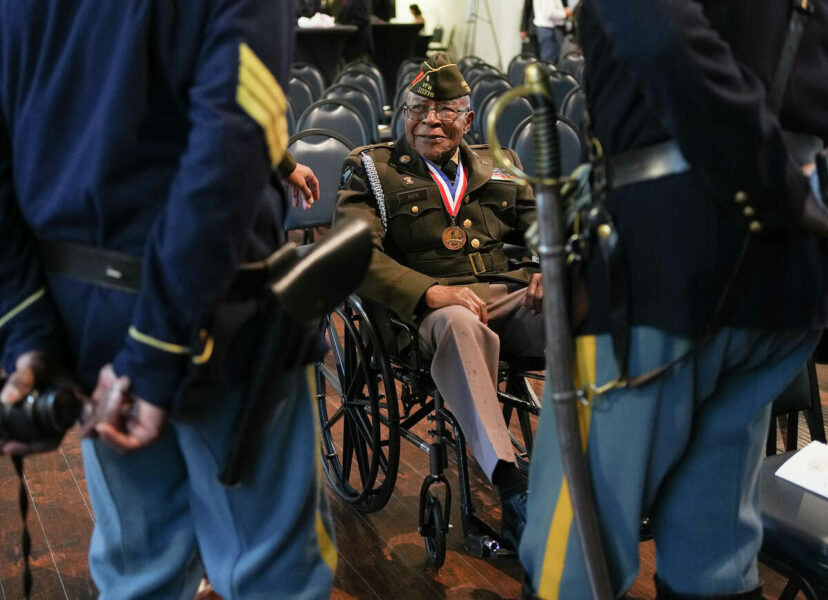
Soldiers’ Vindication Also a Win for Wells, Du Bois
“The U.S. Army set aside the convictions of mutiny, murder and assault for 110 Black soldiers who were accused in the 1917 Houston Riot at Camp Logan in a ceremony Monday” at the Buffalo Soldiers National Museum, Amber Elliott reported Monday for the Houston Chronicle, belatedly vindicating the work of iconic Black journalists Ida B. Wells-Barnett and W.E.B. Du Bois, who took up the soldiers’ cause a century ago.
As reported in this space in 2018, “In 1917, a two-day race riot broke out in East St. Louis, Ill., an already tense place where newly arrived blacks from the South competed with white immigrants for jobs in a city already straining to meet the demands of wartime production.
“The riot began after two white detectives were killed. White men driving a vehicle similar to the detectives’ had been yelling, cursing and firing into dwellings and a church in a middle-class black neighborhood.
“Whites retaliated. ‘Before the two-day riot subsided, two hundred homes had been burned down, most in the sixteen-block African American Black Valley district,’ Paula J. Giddings wrote in ‘Ida: A Sword Among Lions.’
“Some five thousand blacks fled the city. It was impossible to accurately calculate the death toll. The official total was thirty-nine; other estimates were at least double the figure . . . Ida put the figure at one hundred and fifty. . . .
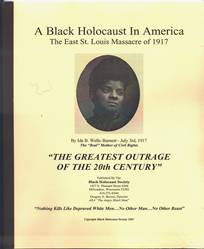 “Wells went to the scene, interviewed black female survivors and produced a pamphlet, ‘The East St. Louis Massacre: The Greatest Outrage of the 20th Century.’ (pictured)
“Wells went to the scene, interviewed black female survivors and produced a pamphlet, ‘The East St. Louis Massacre: The Greatest Outrage of the 20th Century.’ (pictured)
“A month later, in August 1917, a soldier from the black 24th United States Infantry, 3rd Battalion, was beaten and incarcerated for coming to the aid of a black woman in Houston who was being abused by two policemen.
“When word reached the battalion, a false rumor spread that the soldier had been killed. About 100 black soldiers went to police headquarters in San Felipe, Texas, only to be met by a mob of a thousand whites. White and black civilians and soldiers were killed.
“In the predawn hours of Dec. 11, 1917, the Army hanged 13 of the 63 soldiers who had been charged with disobedience, mutiny, assault and murder. In a second court-martial, 11 more were given a death sentence.
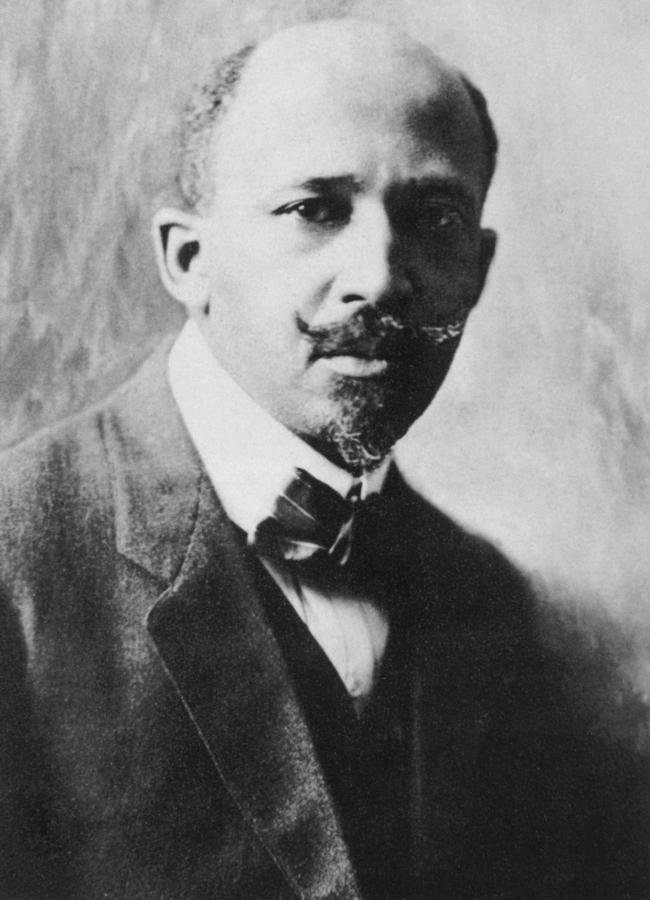 “Wells and W.E.B. Du Bois (pictured), editor of the NAACP’s the Crisis, each condemned what they considered a double standard and the inability of the soldiers to appeal.
“Wells and W.E.B. Du Bois (pictured), editor of the NAACP’s the Crisis, each condemned what they considered a double standard and the inability of the soldiers to appeal.
“Wells earned a visit from intelligence officers when she had buttons made up that memorialized the men of the 24th. One threatened to arrest her on a charge of treason if she continued to distribute them. Wells said it would be an ‘honor’ to go to prison under such circumstances, Giddings wrote.”
At the Buffalo Soldiers National Museum Monday, Patricia Ortiz reported for Houston Public Media, Brig. Gen. Ronald D. Sullivan “said the names of the soldiers who were convicted and a bell rang after each name in their honor during the event. The 3rd Battalion, 24th Infantry Regiment was an all-Black Buffalo Soldier Regiment, according to the U.S. Army. Sullivan said they were assigned to guard the construction site that would become Camp Logan.
” ‘The soldiers came to town with patriotism in their hearts, ready to serve their country faithfully. But they were met with racist provocations and physical violence,’ he said.
“According to the U.S. Army, the first set of soldiers convicted were executed in secrecy, and within a day of being convicted. Sullivan said the aftermath led to the establishment of due process for service members.
“That seemed to be the end of the story. The Houston incident had become a historical footnote for niche academics. But the story was very much alive for the descendants of the wrongfully executed and the wrongfully convicted,” he said. . . .”
- Joy Sewing, Houston Chronicle: Camp Logan soldiers deserve long-awaited justice as others, including Black Vietnam vets, still wait (paywall)
In a statement about February’s arrest of Evan Lambert, Ken Lemon, president of the National Association of Black Journalists, said, “In a time where reporters are being harassed in their press gear and Black men continue to be harmed at the hands of police, the imagery of Evan being pushed, handcuffed, and placed in a cruiser while working in a professional, harmless capacity is still disturbing.” (Credit: YouTube)
Reporter Sues Over His Arrest at News Conference
“Evan Lambert, a journalist for NewsNation, filed a lawsuit on Monday against local government entities and several law enforcement officials in Ohio stemming from his unlawful arrest earlier this year while covering a press conference about the derailment of a train carrying toxic chemicals in East Palestine, Ohio,” the Reporters Committee for Freedom of the Press said Monday.
“Lambert, represented by attorneys from the Reporters Committee for Freedom of the Press and the First Amendment Clinic at Case Western Reserve University School of Law, alleges that Columbiana County, the city of East Palestine, and five law enforcement officials violated his rights under the U.S. Constitution and Ohio law.
“The lawsuit, filed in the U.S. District Court for the Northern District of Ohio, argues that those violations were the product of inadequate policies, inadequate training, and the personal participation of key policymaking officials in the decision to arrest and charge Lambert for his newsgathering.
“ ‘I’m bringing this lawsuit because journalists should be able to cover newsworthy matters without fear of arrest or retaliation,’ Lambert said. ‘The public had an obvious interest in the response by Ohio officials to the train derailment in East Palestine, and as a journalist, it was my duty to report that information.’
“Lambert attended the press conference held by Ohio Gov. Mike DeWine days after a train operated by Norfolk Southern derailed in East Palestine on Feb. 5, releasing hazardous materials into the air, soil, and water. As the press conference began, Lambert delivered a live, on-air report to NewsNation viewers. Law enforcement officials ordered Lambert to stop broadcasting and — when Lambert asserted his First Amendment right to cover the press conference — violently arrested him. Lambert was then charged in Columbiana County Municipal Court with trespass and resisting arrest. . . . “
The National Association of Black Journalists issued a statement of support Friday for Lambert, an NABJ member. “A lawsuit should never be required in order to foster a safer environment for journalists in our communities,” said NABJ President Ken Lemon, past chair of the Black Male Media Project. “In a time where reporters are being harassed in their press gear and Black men continue to be harmed at the hands of police, the imagery of Evan being pushed, handcuffed, and placed in a cruiser while working in a professional, harmless capacity is still disturbing,” the statement said in part.

Series Tackles High Rate of Natives in Foster Care
“South Dakota officials have known Native American children are overrepresented in the foster care system for nearly 50 years,” Makenzie Huber and Annie Todd wrote Nov. 6 in the first report from a joint investigation by the South Dakota Searchlight and the Argus Leader in Sioux Falls, S.D. “The Indian Child Welfare Act, a 1978 federal law, was meant to tackle the problem not just in the state but across the country at a time when Native children were regularly removed from their families.
“But despite ICWA and a 2004 state commission to study ICWA compliance in South Dakota, Native American children continue to predominate in the state’s foster care system. They accounted for nearly 74% of children in the foster care system at the end of fiscal year 2023 — despite accounting for only 13% of the state’s overall child population.”
Huber and Todd also wrote, “Native children who are removed from their homes and placed in foster care are more likely to have post-traumatic stress disorder, depression and anxiety disorders; to be incarcerated or homeless; and to die earlier than their counterparts who have not been removed, studies show. The trauma of being removed from their homes is compounded by a loss of cultural ties. And in the future, studies indicate these children are more likely to have their own children removed from their care, like their parents before them.
“The Argus Leader and South Dakota Searchlight have spent months conducting dozens of interviews, traveling to meet activists, state officials and families, and analyzing data to understand why Native children continue to be overrepresented in the child welfare system. In this nine-part series, we explore solutions and the effects on families and children from a system Gilbert has deemed ‘not caring.’ ”
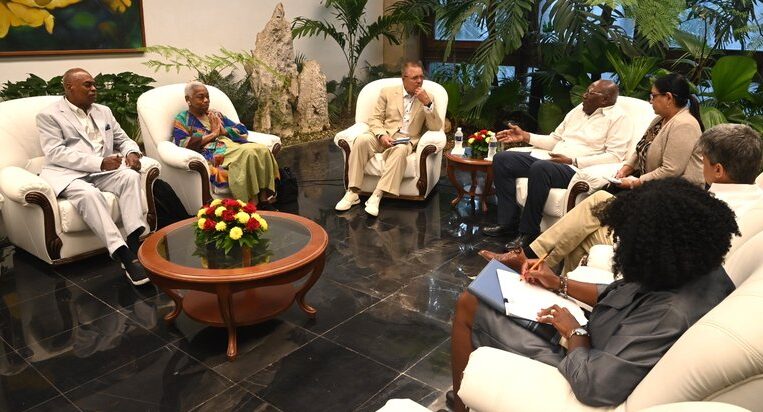
Press Group Scores Nicaragua, Cuba, Venezuela
The major association of press groups in the Americas concluded this week with a declaration that democracy is weakening in the hemisphere, adding, “The worst-hit countries in the region were once again the dictatorships of Nicaragua, Cuba, and Venezuela.”
In those countries, “Arrests, kidnappings, and exiles continued, as well as restrictions in the digital space. Threats against private advertisers in the independent press, media closures, and cancellations of television and radio concessions persisted.”
The Inter American Press Association, which met in Mexico City, said “On a general level, the resurgence of dictatorships, the strengthening of authoritarianism, organized crime, and economic weakness were the factors that most affected the region’s freedom of expression and press freedom.
“Seven journalists were murdered: three in Mexico, two in Guatemala, one in Colombia, and one in Haiti, among many other attempts on their lives. But the violence did not end there. The number of exiled journalists increased, with at least 25 new cases reported: 15 in El Salvador, five in Ecuador, three in Nicaragua, one in Bolivia, and one in Paraguay. Arrests continued: four in Cuba, two in Nicaragua, three in the U.S., and one in Guatemala. Seven journalists were kidnapped and later released.”
In 2021, IAPA denounced Cuba before the Inter-American Commission on Human Rights after a site visit, citing “the increasing repression of the Cuban government against its citizens and independent journalism.”
At the United Nations this month, U.S. deputy ambassador Paul Folmsbee said approximately 1,000 political prisoners remain behind bars in Cuba, more than at any point in its recent history, Edith M. Lederer reported for the Associated Press.
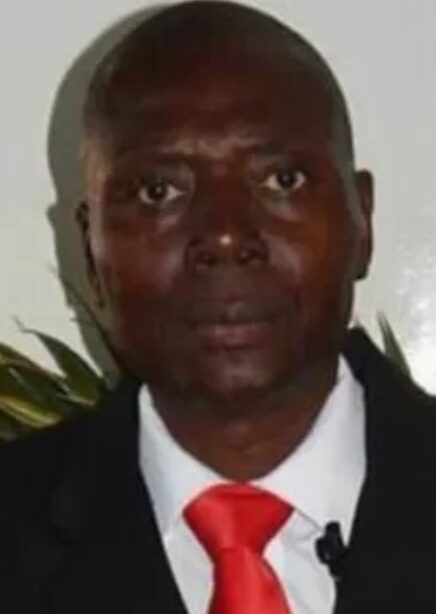 On Thursday, IAPA condemned the murder of Haitian journalist Paul Jean Marie (pictured) that occurred in May, and called on the government of Haiti “to take the necessary actions so that this crime does not remain without punishment.”
On Thursday, IAPA condemned the murder of Haitian journalist Paul Jean Marie (pictured) that occurred in May, and called on the government of Haiti “to take the necessary actions so that this crime does not remain without punishment.”
The IAPA also asked Haitian authorities to “develop mechanisms to assist press workers who have been forced to leave their homes due to the high rates of violence and insecurity registered in the country.”
 Carlos Lauría (pictured) assumed his duties as executive director, replacing journalist Ricardo Trotti, who has led the organization after of 31 years and nine years as executive director.
Carlos Lauría (pictured) assumed his duties as executive director, replacing journalist Ricardo Trotti, who has led the organization after of 31 years and nine years as executive director.
Lauría is originally from Argentina and resides in New Jersey. He has been a free expression portfolio manager at the London-based Open Society Foundation’s independent journalism program and held leadership positions at the Committee to Protect Journalists.
The Journal-isms Roundtable is planning a Dec. 3 session, “Cuba: Victim, Villian or Both?”
- Sabrina Melendez presentation, Morgan State University: Socialism and Cuba: Resisting Racial & Colonial Capitalism (Nov. 14)
Short Takes
- “The decline of local news in the United States is speeding up despite attention paid to the issue, to the point where the nation has lost one-third of its newspapers and two-thirds of its newspaper journalists since 2005,” David Bauder reported Thursday for the Associated Press. “An average of 2.5 newspapers closed each week in 2023 compared to two a week the previous year, a reflection of an ever-worsening advertising climate, according to a Northwestern University [Medill School] study issued Thursday. Most are weekly publications, in areas with few or no other sources for news. . . .”
 Maribel Perez Wadsworth (pictured), former president of Gannett Media and publisher of USA Today, has been named as president and CEO of the John S. and James L. Knight Foundation, the foundation announced Tuesday. “A Miami native, she makes history as Knight’s seventh president and the first woman to lead the foundation.” She succeeds Alberto Ibargüen, who publicly announced his decision to retire from Knight Foundation on March 24.
Maribel Perez Wadsworth (pictured), former president of Gannett Media and publisher of USA Today, has been named as president and CEO of the John S. and James L. Knight Foundation, the foundation announced Tuesday. “A Miami native, she makes history as Knight’s seventh president and the first woman to lead the foundation.” She succeeds Alberto Ibargüen, who publicly announced his decision to retire from Knight Foundation on March 24.
- “America’s Black and Latino students are at a disadvantage in nearly every measure of educational opportunity, with less access to advanced classes, counselors and even certified teachers, according to data released Wednesday by the U.S. Education Department,” Collin Binkley and Annie Ma reported Wednesday for the Associated Press. “The findings reflect inequities that have lasting implications for students’ ability to learn effectively, go on to college and earn degrees. . . .”
 “The Federal Communications Commission has enacted new rules intended to eliminate discrimination in access to internet services, a move which regulators are calling the first major U.S. digital civil rights policy,” Matt Brown reported for the Associated Press. “The rules package, which the commission ratified on Wednesday, would empower the agency to review and investigate instances of discrimination by broadband providers to different communities based on income, race, ethnicity and other protected classes. The order also provides a framework for the FCC to crack down a range of digital inequities including the disparities in the investment of services for different neighborhoods, as well as the ‘digital divide,’ a term experts use to describe the complete lack of internet access many communities experience due to regional or socioeconomic inequality. . . .”
“The Federal Communications Commission has enacted new rules intended to eliminate discrimination in access to internet services, a move which regulators are calling the first major U.S. digital civil rights policy,” Matt Brown reported for the Associated Press. “The rules package, which the commission ratified on Wednesday, would empower the agency to review and investigate instances of discrimination by broadband providers to different communities based on income, race, ethnicity and other protected classes. The order also provides a framework for the FCC to crack down a range of digital inequities including the disparities in the investment of services for different neighborhoods, as well as the ‘digital divide,’ a term experts use to describe the complete lack of internet access many communities experience due to regional or socioeconomic inequality. . . .”
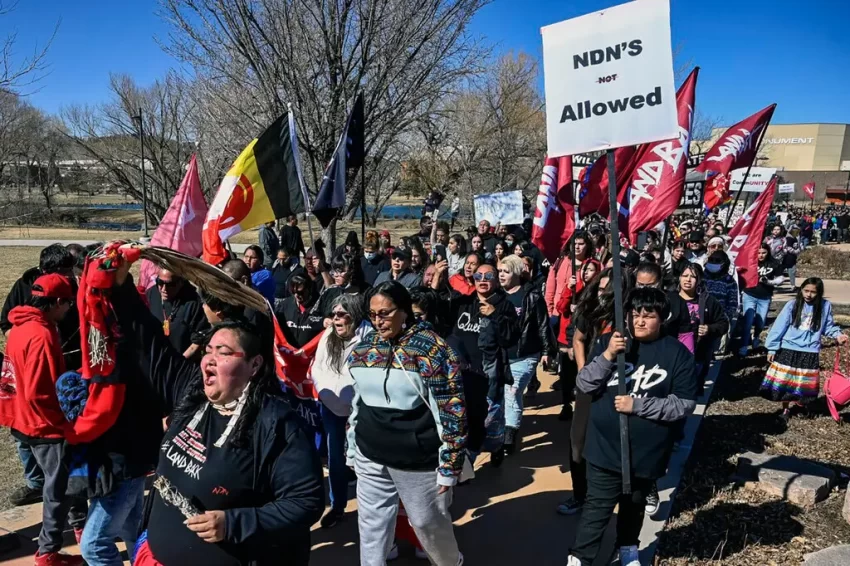
- “Within 60 days of the date of entry of this Consent Decree, Defendant Retsel Corporation shall place in any advertisements in television, newspaper, or internet media a statement that the Grand Gateway Hotel and Cheers Sports Lounge and Casino are open to all members of the public on an equal basis without regard to race, color, or national origin [PDF], and shall provide copies of such advertisements to the United States,” states a consent decree between the Justice Department and the Retsel Corporation, owners of the Grand Gateway Hotel in Rapid City, S.D. “Hotel co-owner Connie Uhre in March 2022 posted on social media that she would no longer allow American Indians on the property because of a fatal shooting at the hotel involving two teenagers who police said were Native American,” Summer Ballentine reported Monday for the Associated Press.
- Newly released data from the Corporation for Public Broadcasting “shows that the total number of employees at public media stations has risen to its highest level since 2021 and that representation of people of color in the system has continued to grow,” Julian Wyllie reported Wednesday for Current. “According to the new data, percentages of Hispanic, African American, Asian and Pacific Islander staffers and employees of two or more races increased at stations. Total minority staffing grew 2.5% from 2022. The largest increase was among Hispanics, at 1.3%. . . .”
- “More than 200 professional and collegiate journalists gathered at Howard University in Washington, DC for the Democracy Summit sponsored by the Center for Journalism & Democracy which was founded by journalist and professor Nikole Hannah-Jones,” Howard University reported. “During its second annual summit, various panels consisting of professionals from around the country, renewed a call for democracy-based journalism. NewsVision reporter Kiara Patterson has the story. . . .”
- “A new AAPI Data/AP-NORC poll finds that 86% of people from Asian American, Native Hawaiian and Pacific Islander (AAPI) communities say that racism is a serious problem in the United States. Roughly half have faced discrimination based on their race or ethnicity, and 16% report being a victim of a hate crime including experiencing physical assault, property damage, or threats of assault or property damage because of their race or ethnic background in the last year,” the Associated Press-NORC Center for Public Affairs Research operation reported Tuesday.
- The Asian American Journalists Association’s 2024 annual convention, AAJA24, will be held Aug. 7-11 in Austin, Texas, at the Hilton Austin, the association announced Thursday.
- “Digging deeply into family lineage has taken off with visits to genealogy websites estimated at over 100 million a year,” Geoff Bennett reported Tuesday for the “PBS NewsHour.” “The newly-opened International African American Museum in Charleston, South Carolina, aims to honor untold stories at one of America’s most sacred sites. That effort involves excavating the past through genealogy. . . .”
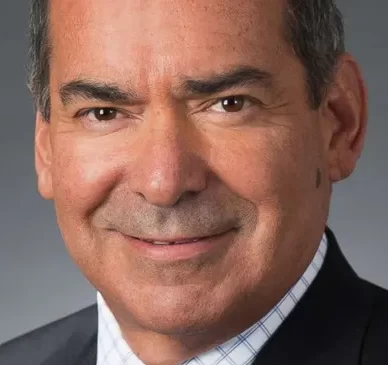 “Jim Avila (pictured), former ABC News correspondent, has joined KGTV San Diego as senior investigative reporter. Scripps owns the station, known as ABC 10News,” Michael Malone reported Wednesday for Broadcasting & Cable. “Avila has been a media columnist for Barrett News Media since May. He stepped down from ABC News in 2021. He had been a senior national correspondent, and correspondent on 20/20, with a focus on law and justice, and consumer investigations. . . .”
“Jim Avila (pictured), former ABC News correspondent, has joined KGTV San Diego as senior investigative reporter. Scripps owns the station, known as ABC 10News,” Michael Malone reported Wednesday for Broadcasting & Cable. “Avila has been a media columnist for Barrett News Media since May. He stepped down from ABC News in 2021. He had been a senior national correspondent, and correspondent on 20/20, with a focus on law and justice, and consumer investigations. . . .”
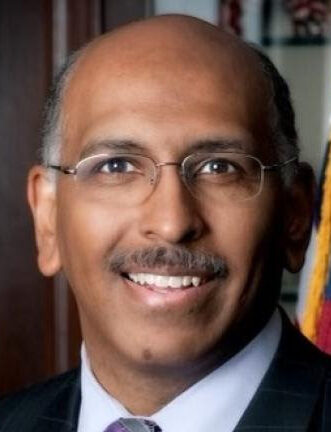 “Groundbreaking political figure Michael Steele (pictured) has been appointed as the 2023-2024 Gwendolyn S. and Colbert I. King Chair Endowed Chair in Public Policy, Howard University announced Oct. 4. “In this role, Steele will develop and host a lecture series to engage the Howard University community on several subjects including politics, voting, policy making, and civil service. . . .”
“Groundbreaking political figure Michael Steele (pictured) has been appointed as the 2023-2024 Gwendolyn S. and Colbert I. King Chair Endowed Chair in Public Policy, Howard University announced Oct. 4. “In this role, Steele will develop and host a lecture series to engage the Howard University community on several subjects including politics, voting, policy making, and civil service. . . .”
 Despite the hubbub around management issues at Ibram X. Kendi’s (pictured) Center for Antiracist Research at Boston University, “none of the center’s funders have raised public concerns about its work,” Thalia Beaty reported Monday for the Associated Press. “Grantmakers and advocates for racial justice within philanthropy said the center’s problems don’t represent a larger trend about donations made in 2020 around racial justice, especially given that it’s not unusual for new organizations to have growing pains,” Beaty continued. “Earlier this month, the university said an initial inquiry found no issues with how the center managed its finances. Acknowledging the layoffs in September, the university and Kendi said it was not financially sustainable to conduct research and develop programs with its own employees, despite having raised more than $50 million for the center since its founding in 2020. Instead, the center will host academics for nine-month fellowships. The center will no longer develop a Master’s program in antiracism studies curriculum, an academic minor for undergraduates or a database of antiracist campaigns across the U.S. . . .”
Despite the hubbub around management issues at Ibram X. Kendi’s (pictured) Center for Antiracist Research at Boston University, “none of the center’s funders have raised public concerns about its work,” Thalia Beaty reported Monday for the Associated Press. “Grantmakers and advocates for racial justice within philanthropy said the center’s problems don’t represent a larger trend about donations made in 2020 around racial justice, especially given that it’s not unusual for new organizations to have growing pains,” Beaty continued. “Earlier this month, the university said an initial inquiry found no issues with how the center managed its finances. Acknowledging the layoffs in September, the university and Kendi said it was not financially sustainable to conduct research and develop programs with its own employees, despite having raised more than $50 million for the center since its founding in 2020. Instead, the center will host academics for nine-month fellowships. The center will no longer develop a Master’s program in antiracism studies curriculum, an academic minor for undergraduates or a database of antiracist campaigns across the U.S. . . .”
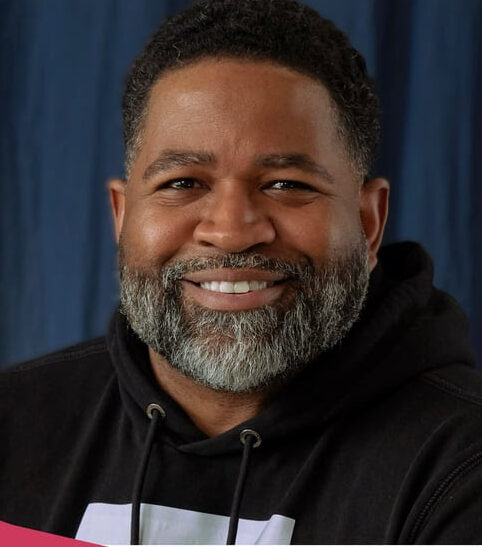 “Solving the issues of racial inequity and injustice in America and abroad will require more than a little imagination. That’s why we are so excited” to welcome political journalist Jamil Smith (pictured) to the team as The Emancipator’s new editor-in-chief, Alex LaSalvia wrote Monday for the Emancipator. Founding co-Editor Amber Payne will fully assume the role of Publisher & General Manager.” The Emancipator describes itself as “a reimagining of the first abolitionist newspaper in the United States with a focus on explaining and identifying solutions to structural racism. The publication is housed within the Center for Antiracist Research at Boston University.”
“Solving the issues of racial inequity and injustice in America and abroad will require more than a little imagination. That’s why we are so excited” to welcome political journalist Jamil Smith (pictured) to the team as The Emancipator’s new editor-in-chief, Alex LaSalvia wrote Monday for the Emancipator. Founding co-Editor Amber Payne will fully assume the role of Publisher & General Manager.” The Emancipator describes itself as “a reimagining of the first abolitionist newspaper in the United States with a focus on explaining and identifying solutions to structural racism. The publication is housed within the Center for Antiracist Research at Boston University.”
- Just after Sen. Tim Scott, R-S.C., pulled out of the Republican presidential race, the New Yorker published a piece on Scott by staff writer Robert Samuels Monday that said, “For a certain kind of white Republican voter, Scott’s political career represents an escape valve in a society pressurized by its racist past. Black voters, many in his own community, have resented him for similar reasons. They’ve warned for years that Scott looks at the country through a concave mirror shaped by his own experience, distorting his personal success and minimizing the larger struggles that come with being Black in America. . . .”
 “Circle City Broadcasting Owner, President and CEO DuJuan McCoy (pictured) has been elected chair of the NAB Leadership Foundation (NABLF) board of directors. McCoy assumes the seat previously occupied by Darrell Brown, former president of Bonneville International Corp., who has served as NABLF Board chair since 2019. the National Association of Broadcasters announced Wednesday.
“Circle City Broadcasting Owner, President and CEO DuJuan McCoy (pictured) has been elected chair of the NAB Leadership Foundation (NABLF) board of directors. McCoy assumes the seat previously occupied by Darrell Brown, former president of Bonneville International Corp., who has served as NABLF Board chair since 2019. the National Association of Broadcasters announced Wednesday.
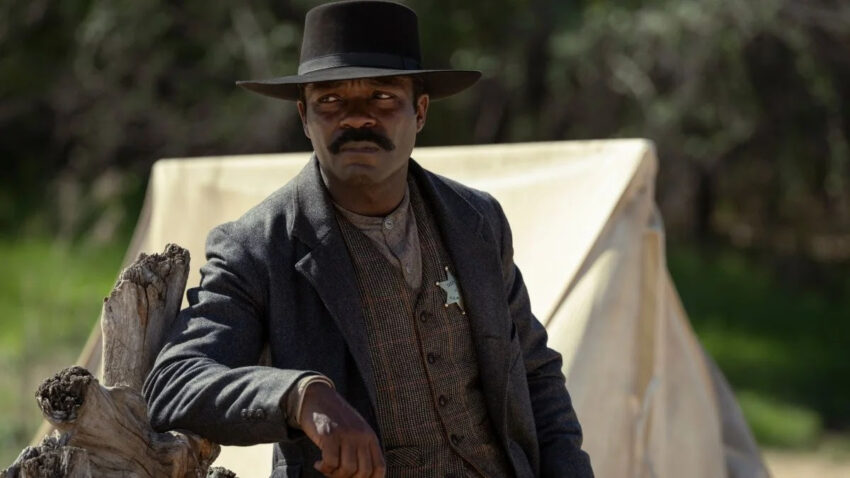
- “ ‘Lawmen: Bass Reeves‘ debuted to an average viewership of 3.34 million during its special premiere airing on CBS, according to Nielsen live-plus-same-day figures,” Loree Seitz reported Wednesday for the Wrap. The series, which debuted Nov. 12, was one that NPR television critic Eric Deggans “really, really wanted to love . . . . Not just because it stars magnetic British actor David Oyelowo, in a series he reportedly worked more than eight years to get made. But because, as a Black man who loves Westerns, I have been complaining for decades about the need for someone to make a great TV show or film about Reeves, a real person who was among the first African Americans to serve as a deputy U.S. marshal west of the Mississippi.”
- “In a dazzling yet elegant celebration, the Sacramento Observer, a beacon of the Black Press, commemorated its 60th anniversary, bringing together community leaders, supporters, and acclaimed artists,” Stacy M. Brown wrote Monday for the National Newspaper Publishers Association. “The event, held at the landmark Sacramento Memorial Auditorium in California’s capital city, not only honored the historical significance of the Observer but also highlighted its enduring relevance in today’s dynamic media landscape. The Observer enjoys as rich a history as any other newspaper – Black, or white-owned. . . .”
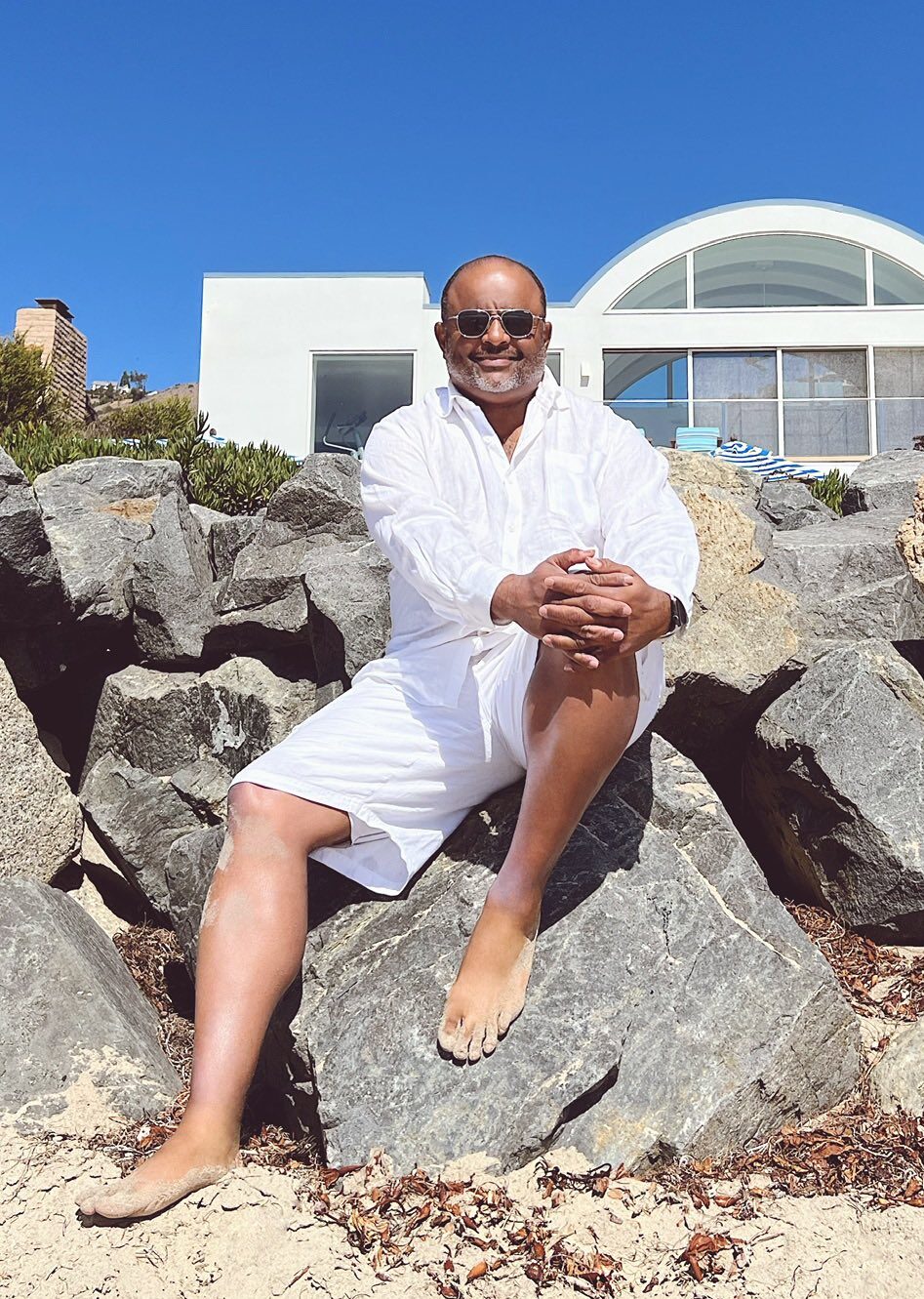 Inspiration? From entrepreneurial journalist Roland Martin (pictured) Wednesday: “Today is my 55th birthday. And considering how I like to blow past the speed limit signs, don’t think for a second that I plan to slow down. But I do enjoy the scenic road of life and like to take the time to smell the flowers. Many people go through life trying to figure out what they can do to make a difference. For me, that’s my DAILY mission. What can I do TODAY that could change someone else’s life and their lineage. To have family that allows me to be me and to do me is a blessing. Am I easy to deal with? No. It’s because I have a singular pursuit for greatness. Not to measure myself against others, but against myself and God’s expectations for the gifts and talents bestowed upon me. I thank all of you for coming along this journey. Trust me, there are new mountains to climb. The best is yet to come!”
Inspiration? From entrepreneurial journalist Roland Martin (pictured) Wednesday: “Today is my 55th birthday. And considering how I like to blow past the speed limit signs, don’t think for a second that I plan to slow down. But I do enjoy the scenic road of life and like to take the time to smell the flowers. Many people go through life trying to figure out what they can do to make a difference. For me, that’s my DAILY mission. What can I do TODAY that could change someone else’s life and their lineage. To have family that allows me to be me and to do me is a blessing. Am I easy to deal with? No. It’s because I have a singular pursuit for greatness. Not to measure myself against others, but against myself and God’s expectations for the gifts and talents bestowed upon me. I thank all of you for coming along this journey. Trust me, there are new mountains to climb. The best is yet to come!”
 “Former Texas anchor Eddie Flores (pictured) died Tuesday after a 10-year battle with cancer,” Kevin Eck reported Wednesday for TV Spy. “The news was announced by his wife on social media. Flores . . . joined Midland, Texas ABC station KMID in 2018 as an evening co-anchor alongside Katie Orth. Before that, he worked at KGBT in the Rio Grande Valley. He started his career in Yuma, Ariz., and went on to work in Austin, Texas, and then at KRIS in Corpus Christi in the late nineties. He also worked at KRGV in the Rio Grande Valley for more than 12 years. . . .”
“Former Texas anchor Eddie Flores (pictured) died Tuesday after a 10-year battle with cancer,” Kevin Eck reported Wednesday for TV Spy. “The news was announced by his wife on social media. Flores . . . joined Midland, Texas ABC station KMID in 2018 as an evening co-anchor alongside Katie Orth. Before that, he worked at KGBT in the Rio Grande Valley. He started his career in Yuma, Ariz., and went on to work in Austin, Texas, and then at KRIS in Corpus Christi in the late nineties. He also worked at KRGV in the Rio Grande Valley for more than 12 years. . . .”
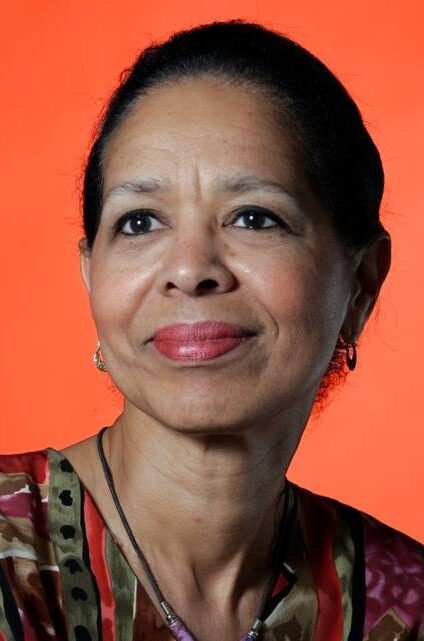 “Helen T. Gray (pictured), a former faith and religion editor at The Kansas City Star whose journalistic career spanned over four decades, died Saturday following an illness,” Glenn E. Rice reported Tuesday for the Kansas City Star. “She was 81. When she was hired in 1965, Gray was The Star’s second Black reporter and its first Black female reporter. In 1971 she was named the religion editor, a position she held until her retirement in early 2013. . . . ‘Helen was a longtime, well-respected journalist — especially in the faith community,’ said Lewis W. Diuguid, a former vice president, editorial page writer and columnist at The Star. ‘She covered all aspects of religion and she did it well, adhering to all of the canons of good journalism. Among her peers at The Star, Helen was the longstanding senior Black staffer, and everyone looked up to her for the knowledge and experience she was able to share with people. She was an exceptional human being, and I miss her.” Diuguid said the Kansas City Association of Black Journalists, an affiliate chapter of the National Association of Black Journalists, honored Gray with the group’s first lifetime achievement award in 1997. . . .”
“Helen T. Gray (pictured), a former faith and religion editor at The Kansas City Star whose journalistic career spanned over four decades, died Saturday following an illness,” Glenn E. Rice reported Tuesday for the Kansas City Star. “She was 81. When she was hired in 1965, Gray was The Star’s second Black reporter and its first Black female reporter. In 1971 she was named the religion editor, a position she held until her retirement in early 2013. . . . ‘Helen was a longtime, well-respected journalist — especially in the faith community,’ said Lewis W. Diuguid, a former vice president, editorial page writer and columnist at The Star. ‘She covered all aspects of religion and she did it well, adhering to all of the canons of good journalism. Among her peers at The Star, Helen was the longstanding senior Black staffer, and everyone looked up to her for the knowledge and experience she was able to share with people. She was an exceptional human being, and I miss her.” Diuguid said the Kansas City Association of Black Journalists, an affiliate chapter of the National Association of Black Journalists, honored Gray with the group’s first lifetime achievement award in 1997. . . .”
- “Unidentified gunmen killed one journalist and abducted two other journalists earlier this month in Mali, the International Press Institute said Wednesday, underscoring the threats facing the media in the region,” the Voice of America summarized Thursday. “Abdoul Aziz Djibrilla, a journalist with community radio Naata, was driving in northern Mali on November 7 along with Radio Coton FM director Saleck Ag Jiddou and Radio Coton FM host Moustapha Kone when they saw gunmen ahead on the road, according to the International Press Institute, or IPI. When they tried to turn around, the unidentified gunmen fired on the car, killing Djibrilla, said Reporters Without Borders, or RSF. The gunmen then abducted Jiddou and Kone. It is unclear whether the journalists were targeted over their work. . . .”
To subscribe at no cost, please send an email to journal-isms+subscribe@groups.io and say who you are.
Facebook users: “Like” “Richard Prince’s Journal-isms” on Facebook.
Follow Richard Prince on Twitter @princeeditor
Richard Prince’s Journal-isms originates from Washington. It began in print before most of us knew what the internet was, and it would like to be referred to as a “column.” Any views expressed in the column are those of the person or organization quoted and not those of any other entity. Send tips, comments and concerns to Richard Prince at journal-isms+owner@
View previous columns (after Feb. 13, 2016).
View previous columns (before Feb. 13, 2016)
- Diversity’s Greatest Hits, 2018 (Jan. 4, 2019)
- Book Notes: Is Taking a Knee Really All That? (Dec. 20, 2018)
- Book Notes: Challenging ’45’ and Proudly Telling the Story (Dec. 18, 2018)
- Book Notes: Get Down With the Legends! (Dec. 11, 2018)
- Journalist Richard Prince w/Joe Madison (Sirius XM, April 18, 2018) (podcast)
- Richard Prince (journalist) (Wikipedia entry)
- February 2018 Podcast: Richard “Dick” Prince on the need for newsroom diversity (Gabriel Greschler, Student Press Law Center, Feb. 26, 2018)
- Diversity’s Greatest Hits, 2017 — Where Will They Take Us in the Year Ahead?
- Book Notes: Best Sellers, Uncovered Treasures, Overlooked History (Dec. 19, 2017)
- An advocate for diversity in the media is still pressing for representation, (Courtland Milloy, Washington Post, Nov. 28, 2017)
- Morgan Global Journalism Review: Journal-isms Journeys On (Aug. 31, 2017)
- Diversity’s Greatest Hits, 2016
- Book Notes: 16 Writers Dish About ‘Chelle,’ the First Lady
- Book Notes: From Coretta to Barack, and in Search of the Godfather
- Journal-isms’ Richard Prince Wants Your Ideas (FishbowlDC, Feb. 26, 2016)
- “JOURNAL-ISMS” IS LATEST TO BEAR BRUNT OF INDUSTRY’S ECONOMIC WOES (Feb. 19, 2016)
- Richard Prince with Charlayne Hunter-Gault, “PBS NewsHour,” “What stagnant diversity means for America’s newsrooms” (Dec. 15, 2015)
- Book Notes: Journalists Follow Their Passions
- Book Notes: Journalists Who Rocked Their World
- Book Notes: Hands Up! Read This!
- Book Notes: New Cosby Bio Looks Like a Best-Seller
- Journo-diversity advocate turns attention to Ezra Klein project (Erik Wemple, Washington Post, March 5, 2014)

